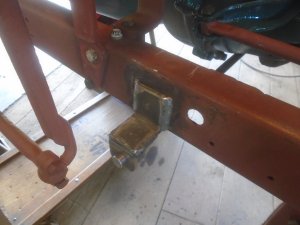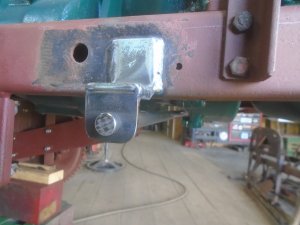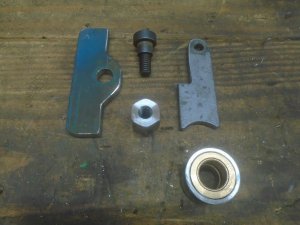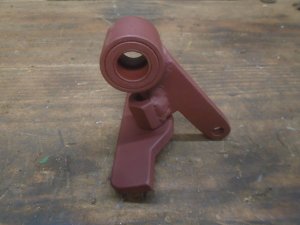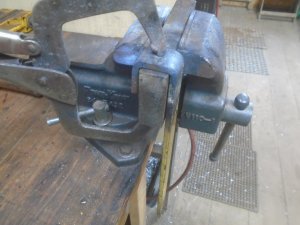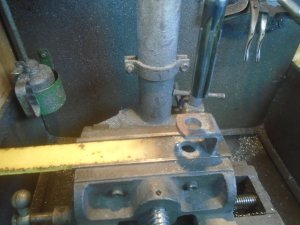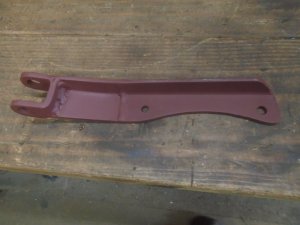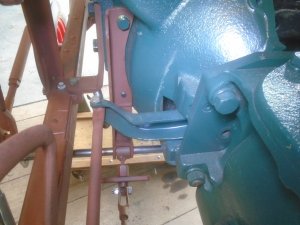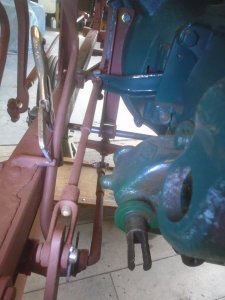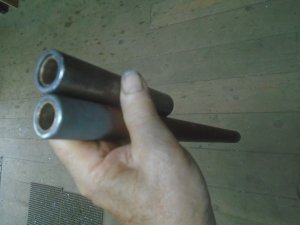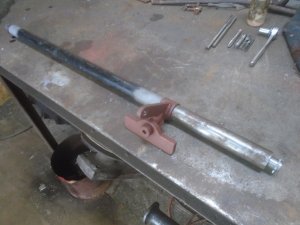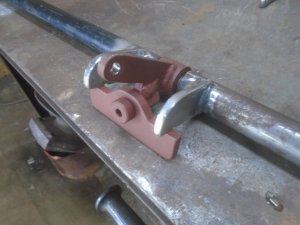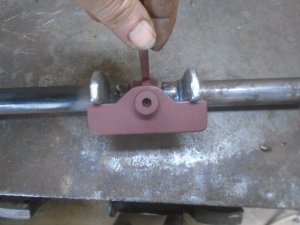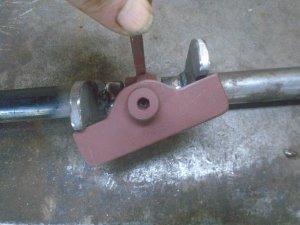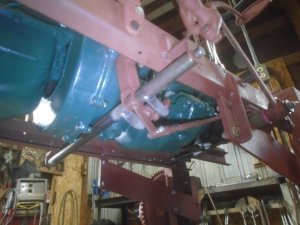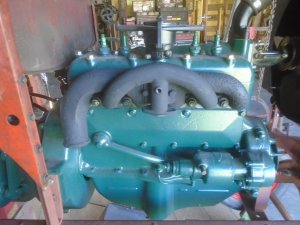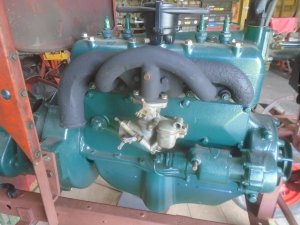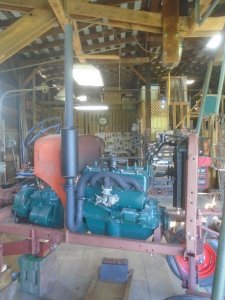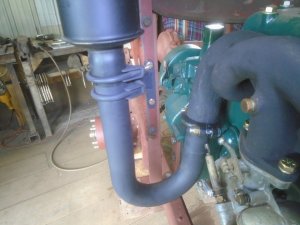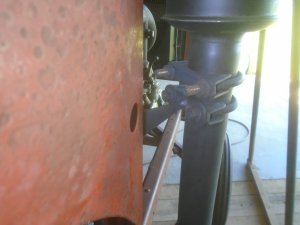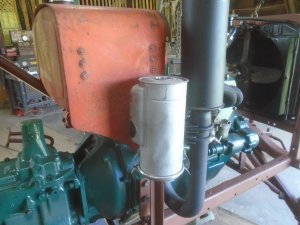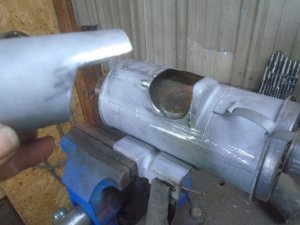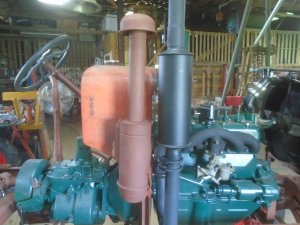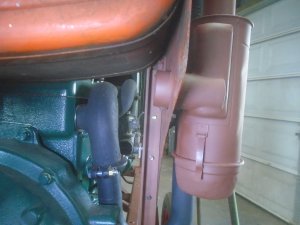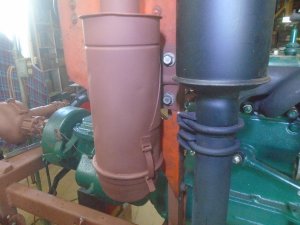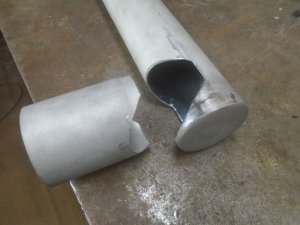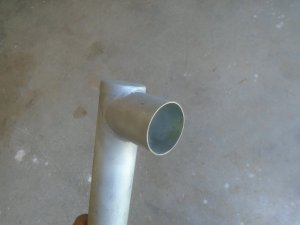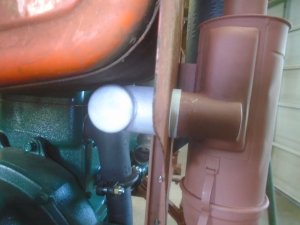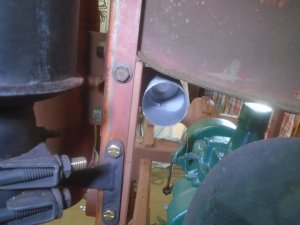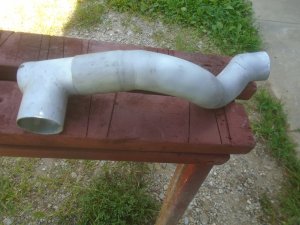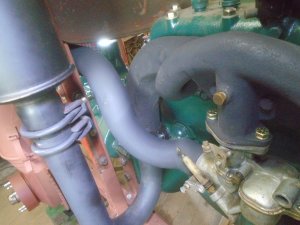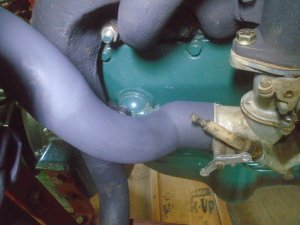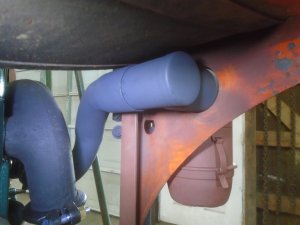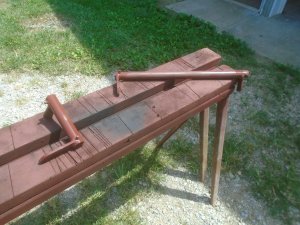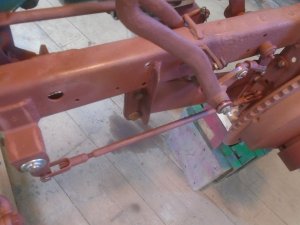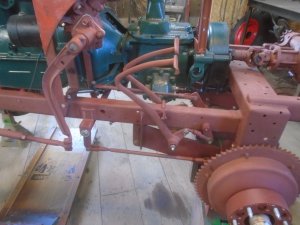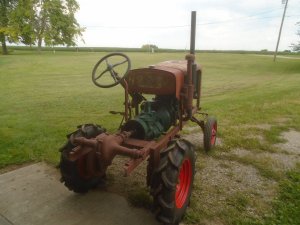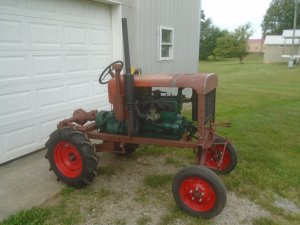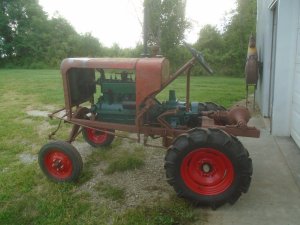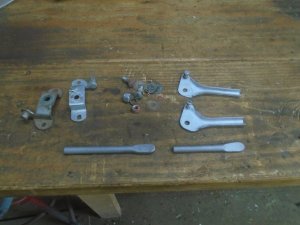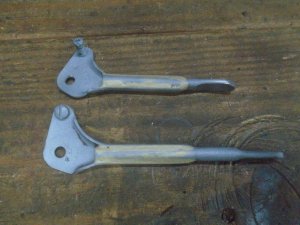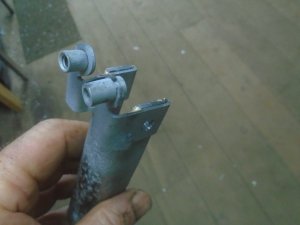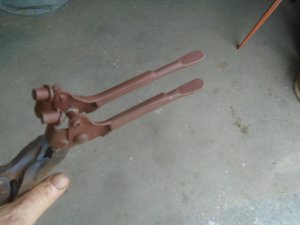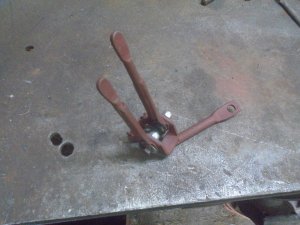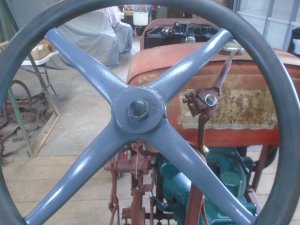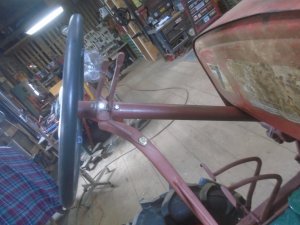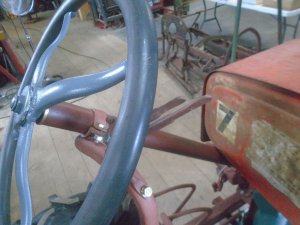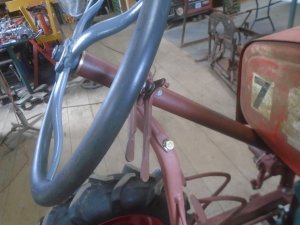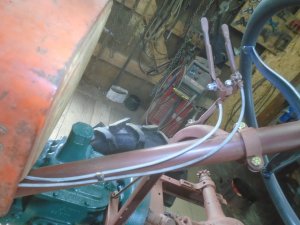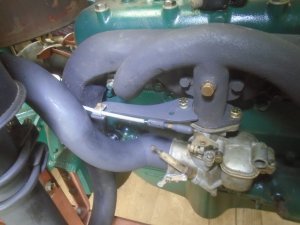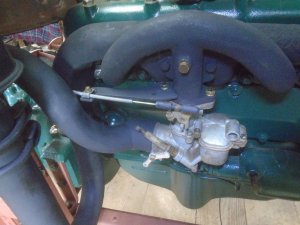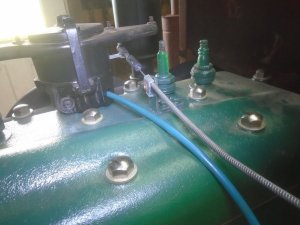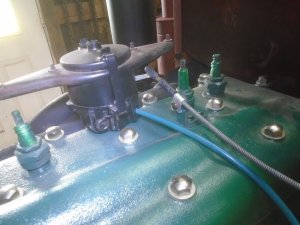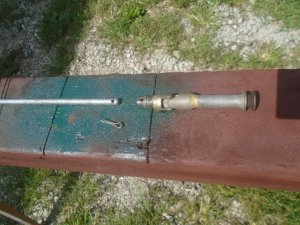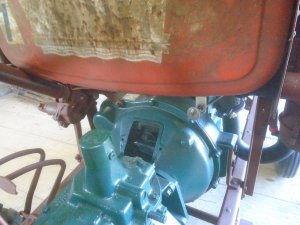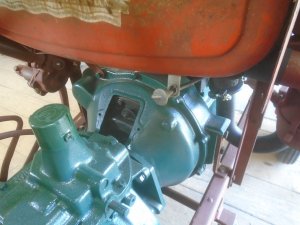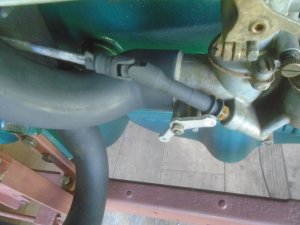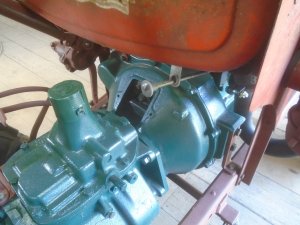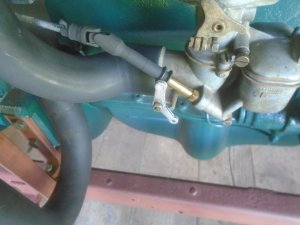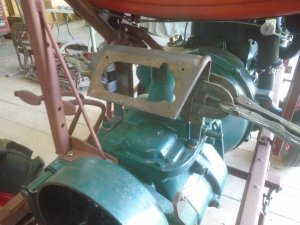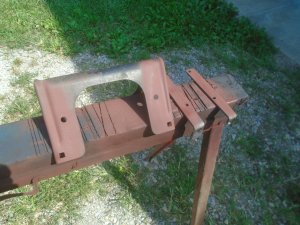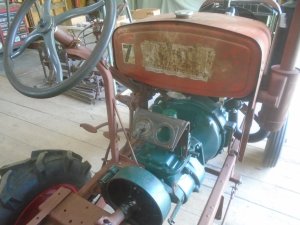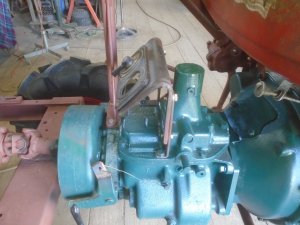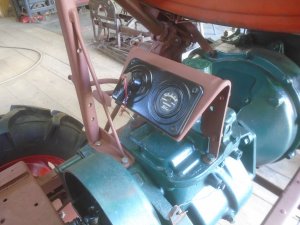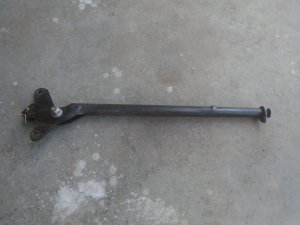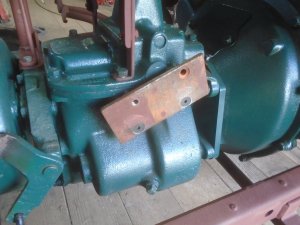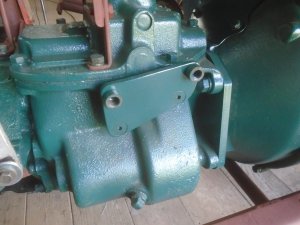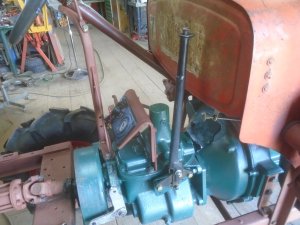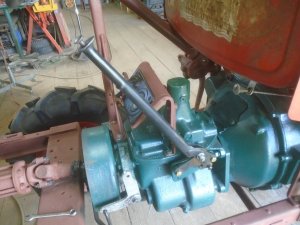I pressed in new bushings in both pedals.
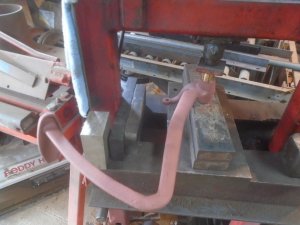
This is the outside lever for the cross shaft on the clutch linkage.
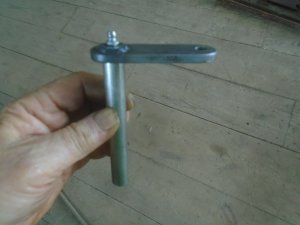
It fits into the pivot bracket that is mounted thru the frame.
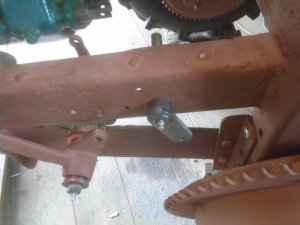
A short linkage rod connects it to the clutch pedal.
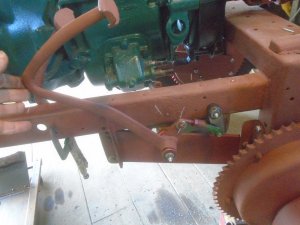
I did not have a piece of round stock large enough for what I need to make the hub for the lever on the inside of the cross shaft. So I turned down two pieces of pipe so they fit inside each other. Then I fit them over a piece of 1 inch bar stock.
I drilled a hole down thru the pieces and pressed a pin into it with the outside of the pin braised on both ends.
The center is drilled out and reamed to fit onto the cross shaft.
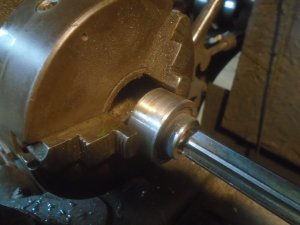
The lever is pressed onto the hub and welded in place.
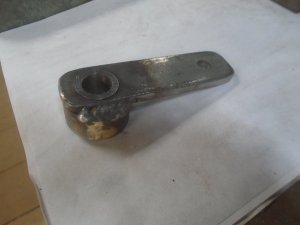
this is positioned on the crass shaft and a spot of weld holds everything together. Then I drilled and tapped a 5/16-18 threaded hole so half of it is on the crass shaft and the other half is on the hub.
With a set screw threaded into the hole, it is just like a key to keep the hub from rotating around the cross shaft and the threads keep it from sliding along the shaft.
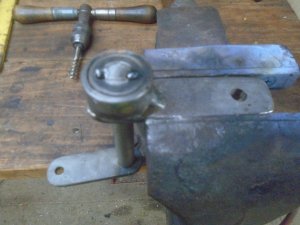
The cross shaft is mounted back in place and a square head set screw is tightened down into the 5/16 threaded hole.
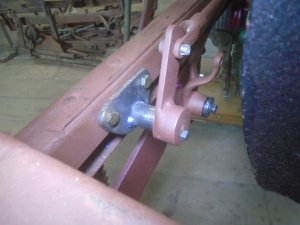
The linkage arm is then made up to go from the inside lever up to the clutch throw-out arm.
This is the position of the pedal with the clutch engaged.
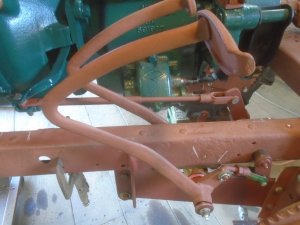
And with the clutch arm pulled all the way back as far as it will go.
The clutch pedal will only have to move about two thirds of this distance for the clutch to work.
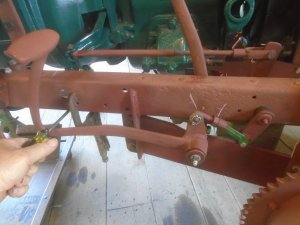

This is the outside lever for the cross shaft on the clutch linkage.

It fits into the pivot bracket that is mounted thru the frame.

A short linkage rod connects it to the clutch pedal.

I did not have a piece of round stock large enough for what I need to make the hub for the lever on the inside of the cross shaft. So I turned down two pieces of pipe so they fit inside each other. Then I fit them over a piece of 1 inch bar stock.
I drilled a hole down thru the pieces and pressed a pin into it with the outside of the pin braised on both ends.
The center is drilled out and reamed to fit onto the cross shaft.

The lever is pressed onto the hub and welded in place.

this is positioned on the crass shaft and a spot of weld holds everything together. Then I drilled and tapped a 5/16-18 threaded hole so half of it is on the crass shaft and the other half is on the hub.
With a set screw threaded into the hole, it is just like a key to keep the hub from rotating around the cross shaft and the threads keep it from sliding along the shaft.

The cross shaft is mounted back in place and a square head set screw is tightened down into the 5/16 threaded hole.

The linkage arm is then made up to go from the inside lever up to the clutch throw-out arm.
This is the position of the pedal with the clutch engaged.

And with the clutch arm pulled all the way back as far as it will go.
The clutch pedal will only have to move about two thirds of this distance for the clutch to work.


